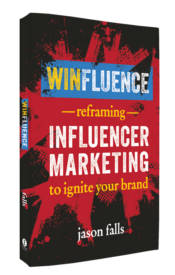The influencer world just became significantly more legit as SAG-AFTRA unveiled a plan to allow anyone who is paid to advertise products via their individual social media platforms to be covered by the union. The qualification puts Instagrammers, YouTubers and TikTok-ers in the same union and professional qualification as screen actors and television and radio artists. It means influencers can now access union benefits like health care and a pension fund.

SAG-AFTRA already covered advertising done by YouTubers. But this expansion to include anyone who creates branded content and posts it on their social media platforms. All social media channels qualify. It covers video and audio work only, not still imagery. But Instagram or Facebook Stories, and TIkTok videos are considered “video” for the purposes of qualifying union members.
There’s no minimum contract amount required. The influencer in question only has to be incorporated as a business, have a signed contract with an advertiser for a branded content deal, and host the content on the influencer’s platforms. So creating content exclusively for a brand partner’s channels may not qualify unless coupled with influencer-hosted content.
Another Step in the Right Direction
The move by SAG-AFTRA makes perfect sense for it as the more high-follower influencers are creating content very similar to that of filmmakers, television and radio broadcasters—members of the union. It will increase its own membership and revenues as you have to pay dues to be in. (For the influencers out there reading, it’s $3,000 initiation and around $225 per year, plus a small percentage of the income you report. See the full list of benefits and dues at SAG-AFTRA’s website.)
But the move is an excellent evolution in the maturity of the influencer space as a whole. While the only influencers or content creators who will likely be able to afford SAG-AFTRA dues for their projects are those with higher rate cards and lots of followers, those are the types who likely don’t have other jobs to fall back on and need the benefits of union representation.
It does present a minor challenge for brands. If influencers operate like entertainment industry members, they will tack on SAG-AFTRA project dues (1.575 percent of all payments up to $500,000) to the brand’s cost for their services. So an influencer that used to charge $5,000 for a project will now charge an extra $78 to cover their union fees. At that level, it’s a rounding error, but an annoying one.
Still, it’s overall a good thing for everyone involved. Influencers now not only have the power of collective bargaining and necessary benefits afforded to most people with full-time jobs, but they can access some degree of professional credibility. I’d be apt to think someone with their SAG card is perhaps more serious about their role in helping my brand produce a return for my investment than someone who may not have one. It shows brands and agencies they’re serious about their job.
The brands get that reassurance and may also see some influencers reduce rates, or at least slow down the increases in their fees, because they’ll no longer have to account for completely out-of-pocket healthcare and retirement costs.
The move is another event in the maturation of the industry which seems to be happening at a much faster pace now than in the last 18-24 months. For those who still doubt the efficacy of influencers or influencer marketing, the industry is one step closer to erasing your fears.
Note: Photo by KAL VISUALS on Unsplash

Order Winfluence now!
Get your copy by ordering on Amazon, Barnes & Noble or direct from Entrepreneur Press! Learn why we’ve been backed into a corner to think influencer marketing means Instagram and YouTube and how reframing it to be “influence” marketing makes us smarter marketers.

